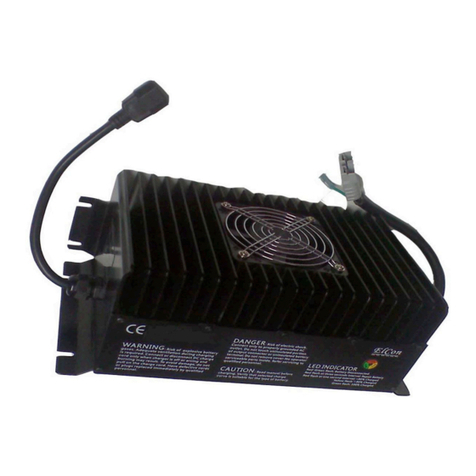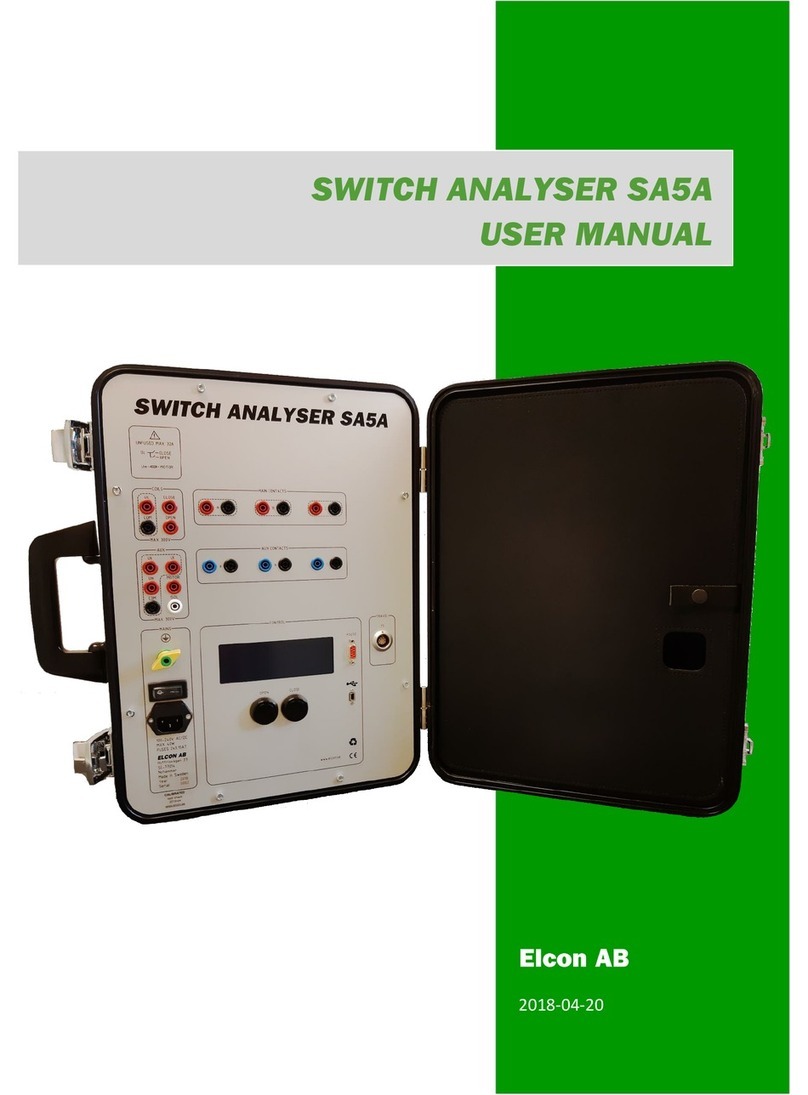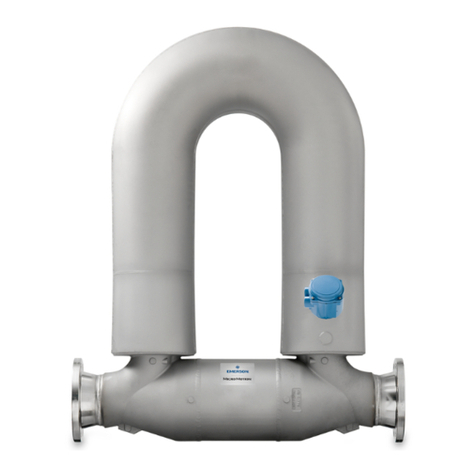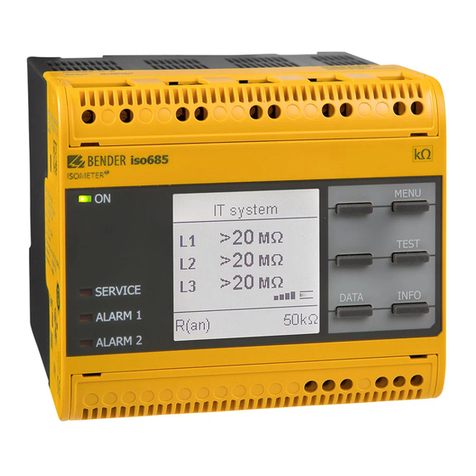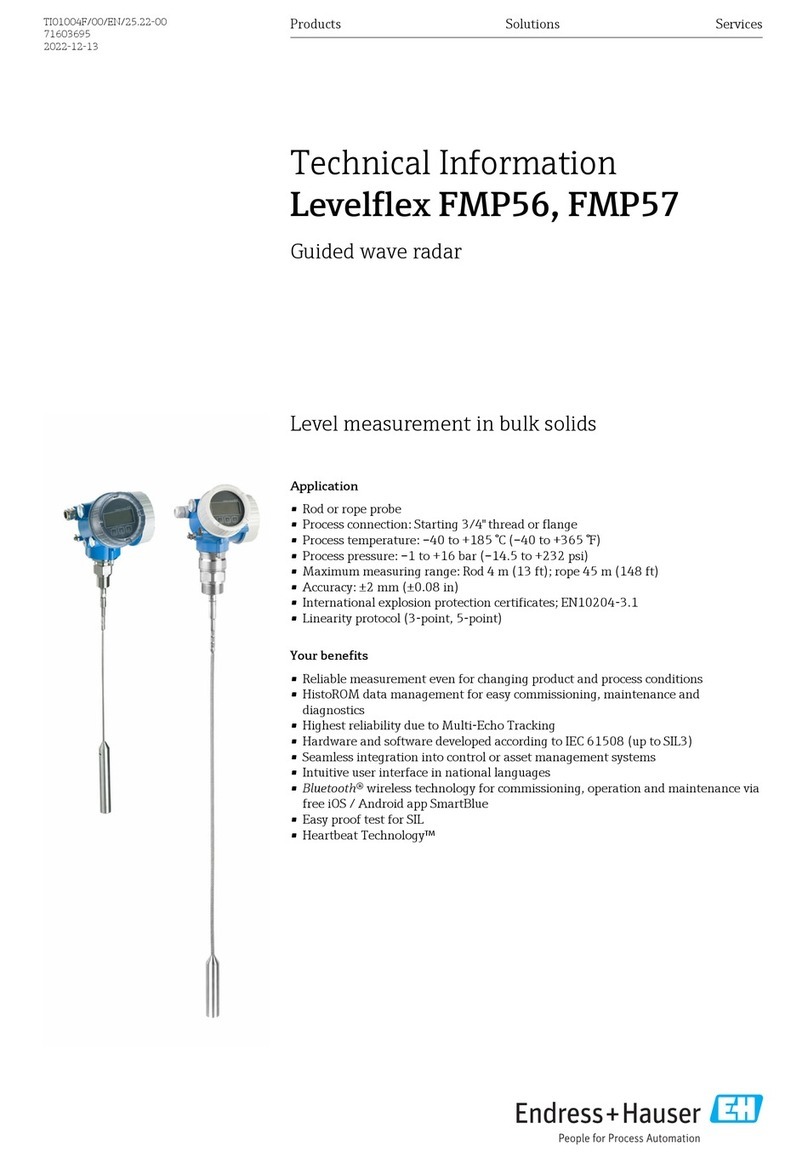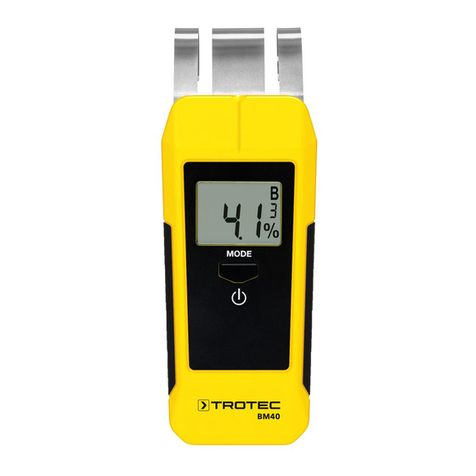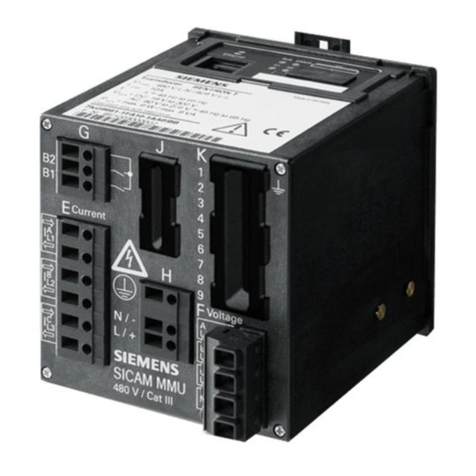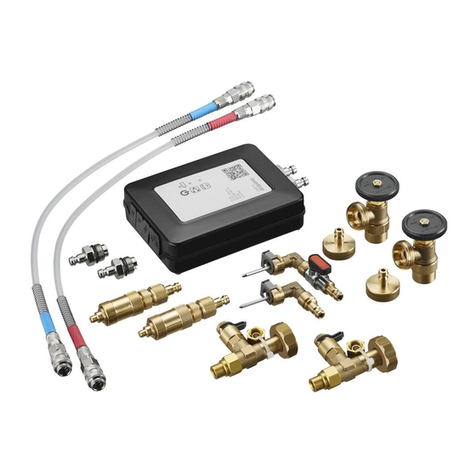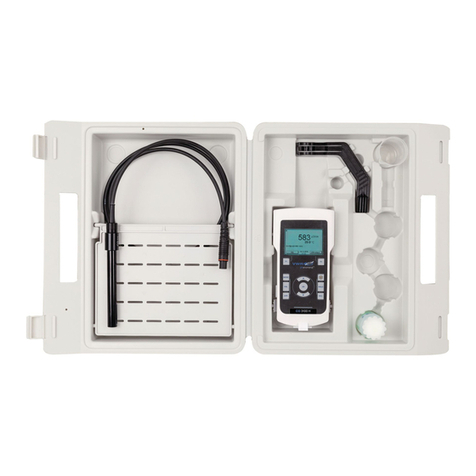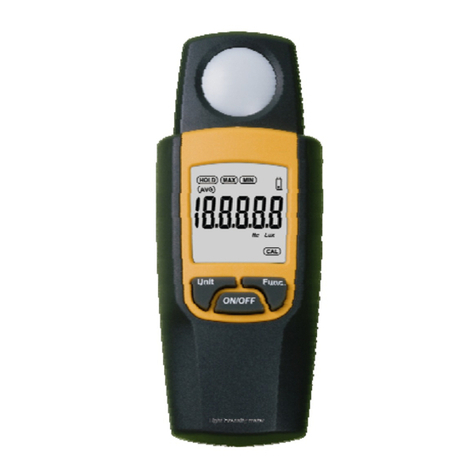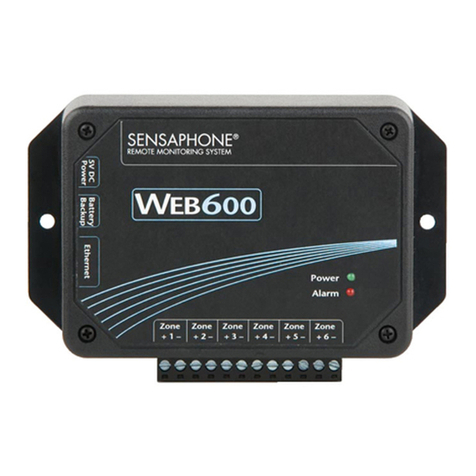Elcon SA10A User manual

www.elcon.se
2018-03-21
Rev 1
SWITCH ANALYZER SA10A
USER MANUAL

Page 2 (40)
Rev 1 2018-03-21 www.elcon.se
Go to INDEX.
INDEX.
INDEX. ........................................................................................................................................... 2
1 General description. .................................................................................................................... 4
2 Safety regulations Important!.............................................................................................. 5
2.1 General safety regulations......................................................................................................................................5
2.2 Connection of SA10A to mains power.....................................................................................................................7
3.0 Connections.............................................................................................................................. 7
3.1 Connections for time measurement. ......................................................................................................................7
3.1.1 Safety regulations. ..................................................................................................................................................7
3.1.2 Principals for connections to SA10A. ......................................................................................................................7
3.1.3 Connections for one breaking unit per phase.........................................................................................................7
3.1.4 Connections for two or more breaking units per phase. ........................................................................................8
3.1.5 Connection for a breaking unit with a pre-insertion resistor..................................................................................8
3.2 Connections for a resistance measurement of a breaking unit. ..............................................................................9
3.2.1 Safety regulations. ..................................................................................................................................................9
3.2.2 Connection. .............................................................................................................................................................9
3.3 Connections for resistance measurement of a pre-insertion resistor....................................................................10
3.3.1 Safety regulations. ................................................................................................................................................10
3.3.2 Principal of measurement.....................................................................................................................................10
3.3.3 Connection. ...........................................................................................................................................................10
3.4 Connection of the breaker operating mechanism. ................................................................................................11
3.4.1 Safety regulations. ................................................................................................................................................11
3.4.2 Connection of operating coils. ..............................................................................................................................11
3.4.3 Connection of motor.............................................................................................................................................11
3.5 Connection of transducers. ...................................................................................................................................12
3.6 Connection to windows PC ...................................................................................................................................12
4 Using SA10A stand alone ........................................................................................................... 13
4.1 Before operation Important! ........................................................................................................................13
4.2 Standalone operation of SA10A ............................................................................................................................ 13
5 Technical Specification............................................................................................................... 15
6 Maintenance. ............................................................................................................................ 18
6.1 Before use. ........................................................................................................................................................... 18
6.2 After use............................................................................................................................................................... 18

Page 3 (40)
Rev 1 2018-03-21 www.elcon.se
Go to INDEX.
6.3 Storing the SA10A................................................................................................................................................. 18
6.4 Every year or when necessary. .............................................................................................................................18
6.5 Battery Fuse .........................................................................................................................................................19
6.7 Upgrading SA10A internal software......................................................................................................................20
6.8 SA10A PROGRAM LOADER in display....................................................................................................................21
7 Adjustments. ............................................................................................................................. 22
7.1 General.................................................................................................................................................................22
7.1.1 Instrument needed. ..............................................................................................................................................22
7.2 Calibration and functional test. ............................................................................................................................23
7.2.1 Check voltage measurement inputs Uc, Uk, Ul, Um. .........................................................................................23
7.2.2 Check current measurement inputs Ic, Im...........................................................................................................24
7.2.3 Check transducer inputs T1, T2, T3.....................................................................................................................25
7.2.4 Check resistance measuring inputs Ur, Ir..............................................................................................................26
7.2.5 Grounding. ............................................................................................................................................................27
7.2.6 Check main contact inputs. 1A,1B,1C,1D,2A,2B,2C,2D,3A,3B,3C,3D. .........................................................27
7.2.7 Check auxiliary contact inputs. 1a, 1b, 2a, 2b, 3a, 3b. .......................................................................................27
7.3 Recalibration procedure. ......................................................................................................................................28
7.3.2 Calibration wizard for current measurement inputs Ic, Im..................................................................................31
7.3.3 Calibration wizard for analogue transducer inputs T1, T2, T3............................................................................33
7.3.4 Calibration of resistance measurement input Ur.................................................................................................35
7.3.5 Calibration of resistance measurement input Ir...................................................................................................37
7.3.6 Enter Password. ....................................................................................................................................................38
8 Transportation/SCRAPPING/Recycling. ...................................................................................... 39
9 SA10A Accessories. .................................................................................................................... 39
10 CE-declaration. ........................................................................................................................ 40

Page 4 (40)
Rev 1 2018-03-21 www.elcon.se
Go to INDEX.
1 GENERAL DESCRIPTION.
The is a portable instrument, especially designed to analyze Circuit Breakers in the field.
Even though is intended for use together with a computer, it can be used stand-alone for some simpler
measurements. To be handy in field works, the is built into a small and robust metal carry case. On the cover
section of the carry case, a notebook computer can be placed while testing.
The measurements that can be made without a Windows computer are: voltage and current for both motor and coils,
time for three independent contacts in, open, close and close-open operations and static resistance of main contacts.
Contact time measurements.
There are three groups, each of four main and two auxiliary contact indication inputs. Main contact max output 30 mA
during operations and can also indicate pre-insertion resistors simultaneously. Auxiliary contact inputs can handle both
free and live contacts. All contact inputs are of type semi protected banana-jacks and are protected against faulty
connections and high voltage discharges.
Travel transducers.
Up to three, digital or analogue, travel transducers, in any combination, can be used for simultaneous measurements.
Resistance measurement.
Main contact resistance measuring can directly be done with an internal 200 Amp current generator. Both static and
dynamic measuring is possible. Pre-insertion resistor resistance can be measured with use of a reference resistance
Operating coil control.
With an external power supply connected through this section the operating coils can be fully controlled. The current flow
through the coils and the supply voltage are measured.
Motor monitoring.
In the Auxiliary section there is provisions to monitor current and voltage from an external motor supply.
Internal sampling.
Sampling frequency for analogue and digital functions can be programmed for frequencies up to 50 kHz. Note! The PC-
software sets the sampling frequency.
Power supply
The SA10A must powered with an external AC- or DC- power supply.
Environmental
SA10A is built in a small metal carry case designed for rough handling in tough outdoor environments. All connections are
protected for any possible type of electrical discharges and disturbances. Some of the inputs are even protected against
faulty connections up to 300V peak.
PC-Computer
In most cases a standard windows notebook computer can be used but for tougher environments an outdoor type is
recommended. For recommended minimum requirements for the notebook computer. See BTS11 User manual
PC-software
See separate manual BTS11 User manual for more information.

Page 5 (40)
Rev 1 2018-03-21 www.elcon.se
Go to INDEX.
2 SAFETY REGULATIONS
IMPORTANT!
This instrument shall only be used by authorized and educated personnel.
It is the operator’s responsibility to read and follow all operating and safety instructions for connecting and using this
instrument. Always keep the below safety instructions in mind when using the instrument.
2.1 GENERAL SAFETY REGULATIONS.
•Local safety regulations.
Always follow local safety regulations for work on high-voltage circuit breakers.
•Ground connection.
Always connect the separate ground terminal (green/yellow) on SA10A to protective ground before any other
connections.
The SA10A unit can only be used in electrical system with a single ground.
If there is a High voltage ground and Low voltage ground make sure that there is no potential voltages difference
between these grounds. If a voltages difference exists between grounds, consult local safety regulations.
Check that the separate protective ground wire is in good condition before connection.
Make sure that the power socket for mains is a grounded outlet and that the power cable is in good condition before
connected the main power to the control unit SA10A.
•Connections.
Before connecting the SA10A to a high-voltage circuit breaker, make sure that the breaker poles are in position CLOSE,
and disconnected from the power line at both sides. The breaker must also be grounded on at least one side.
Follow local safety regulations for work on high-voltage circuit breakers.
To avoid unintentional breaker operation!
Never do any work on a circuit breaker unless the control circuits of the breaker are disconnected from the SA10A
control outputs or from any other remote control device.
All cables shall first be connected to the SA10A before any connections to the test object.
Use of touch-protected connectors is required for personal safety.
Only use original cables for connection and make sure that the cables are in good conditions.
When the SA10A is connected to a wall socket, the socket must be a grounded power outlet.
Note! The inputs for coils “Uc” and motor “Um” are not fused!
Make sure that the output powers to these inputs are fused with maximum 32A.
Take care when working near bare connectors and bus bars. Contact with a conductor may cause an electrical shock.
Take special care at wet conditions.

Page 6 (40)
Rev 1 2018-03-21 www.elcon.se
Go to INDEX.
•Testing the circuit breaker
Make sure that surrounding personal can’t touch the breaker during an operation.
If a test sequence shall be running in automatic mode it’s absolutely necessary to have a security circuit that prevent
surrounding personal to touch the test object during the sequence.
The power supplies for coils and motor must be interlocked to a security circuit that cut the power if the security
circuit is open.
Read also additional safety regulations presented in sections below.
3.1.1 Safety regulations. 3.2.1 Safety regulations.
3.3.1 Safety regulations. 3.4.1 Safety regulations.

Page 7 (40)
Rev 1 2018-03-21 www.elcon.se
Go to INDEX.
2.2 CONNECTION OF SA10A TO MAINS POWER.
The SA10A can be powered from any AC source 100-240V or DC source 100-240 VDC (with a ground connection).
When the SA10A is connected to a wall socket, the socket must be a grounded power outlet.
IMPORTANT!
The SA10A have a separate grounding terminal (green/yellow) that must be grounded to the nearest protective earth
(ground) with a separate wire.
3.0 CONNECTIONS
3.1 CONNECTIONS FOR TIME MEASUREMENT.
3.1.1 SAFETY REGULATIONS.
When only one side of the breaker is connected to earth (ground), special precautions must be observed. To protect
service personnel and the measuring equipment from surges, two important rules must be followed closely.
•The SA10A case must be grounded.
•All circuit breaker connections and disconnection’s must be made while the breaker poles are closed and connected
to earth (ground) on least one side.
•To avoid unintentional breaker operation! Never do any work on a circuit breaker unless the control circuits of the
breaker are disconnected from the SA10A control outputs.
•Use of touch-protected connectors.
3.1.2 PRINCIPALS FOR CONNECTIONS TO SA10A.
To get a useful protocol and to fit to the PC-software it is necessary to connect contacts in a certain way:
•Use separate contact groups ("Contacts 1" - "Contacts 3") for separate phases.
•Use contacts "A" - "D" for separate breaker elements in each phase.
•Use contacts "a" and "b" for connection of auxiliary contacts (live or free)
Note! Do not exceed the input voltage limit of 250 V AC or 300 V DC.
3.1.3 CONNECTIONS FOR ONE BREAKING UNIT PER PHASE.
Figure 2.1 Connections for a one breaking unit per phase

Page 8 (40)
Rev 1 2018-03-21 www.elcon.se
Go to INDEX.
3.1.4 CONNECTIONS FOR TWO OR MORE BREAKING UNITS PER PHASE.
Note!
Only one phase is shown
Figure. 2.2 Connections for four breaking units per phase
3.1.5 CONNECTION FOR A BREAKING UNIT WITH A PRE -INSERTION RESISTOR.
The contact inputs "A" -"D" in each contact group have two levels of resistance sensitivity.
There is no difference between connecting a breaker unit with a pre-insertion resistor and connecting a breaker unit
without a pre-insertion resistor.
Note!
The value of the pre-insertion resistor must be in the range 50 - 5000 ohm
Figure. 2.3 Connections for a breaking unit with a pre-insertion resistor

Page 9 (40)
Rev 1 2018-03-21 www.elcon.se
Go to INDEX.
3.2 CONNECTIONS FOR A RESISTANCE MEASUREMENT OF A BREAKING UNIT.
3.2.1 SAFETY REGULATIONS.
When only one side of the breaker is connected to earth (ground), special precautions must be observed. To protect
service personnel and the measuring equipment from surges, the following important rules must be followed closely.
•The SA10A case must be earthen (grounded).
•All circuit breaker connections and disconnection’s must be made only while the breaker poles are closed and
connected to earth (ground) on least one side.
•To avoid unintentional breaker operation! Never do any work on a circuit breaker unless the control circuits of the
breaker are disconnected from the SA10A control outputs.
•Use of touch-protected connectors is required for personal safety.
•200A Red Pole of SA10A is connected to chassis ground, and must be connected to the grounded side of the breaking
unit. See figure 2.4 below
3.2.2 CONNECTION.
Use a connection cable with an area of 25mm² or more, to connect from the 200A current generator to the
breaking unit that is going to be measured.
Important!
200A Red Pole of is connected to chassis ground, and must be connected to the grounded side of the breaking
unit. See figure 2.4
Important!
Keep the two measuring wires connected to Ur+ and Ur-near together (twisted) as long as possible to reduce
interference and get a good measuring result.
Note!
If there is a current transformer (CT) in the circuit, the 200A current from SA10A shall if possible be connected so that the
200A measuring current not go through the CT. If that not possible, the secondary windings of the CT must be short
circuit and the CT must be demagnetized after done test.
Figure. 2.4 Connections for a resistance measurement of a breaking unit

Page 10 (40)
Rev 1 2018-03-21 www.elcon.se
Go to INDEX.
3.3 CONNECTIONS FOR RESISTANCE MEASUREMENT OF A PRE-INSERTION RESISTOR.
3.3.1 SAFETY REGULATIONS.
When only one side of the breaker is connected to earth (ground), special precautions must be observed. To protect
service personnel and the measuring equipment from surges, the following important rules must be followed closely.
•The SA10A case must be grounded.
•All circuit breaker connections and disconnection’s must be made only while the breaker poles are closed and
connected to earth (ground) on least one side.
•To avoid unintentional breaker operation! Never do any work on a circuit breaker unless the control circuits of the
breaker are disconnected from the SA10A control outputs.
•The reference resistor itself and connections to the reference resistor must be well isolated.
•Warning! Do not short-circuit or touch the auxiliary voltages to and from the SA10A.
Use of touch-protected connectors is required for personal safety.
3.3.2 PRINCIPAL OF MEASURE MENT.
The auxiliary DC-voltage to the coils are used as a voltage source. The voltage division between the pre-insertion resistor
and a reference resistor is used to calculate the resistance of the pre-insertion resistor.
Selection of reference resistor.
Select the reference resistor in the same range (or lower) as the pre-insertion resistor. Use a power resistor (>= 10W).
Current will flow during a short time i.e. the pulse length set for coils.
The voltage across the reference resistor and the pre-insertion resistor are recommended to be greater than 20VDC and
must be less than 300VDC. Try to get as high current as possibly to avoid influence from surrounded capacitive current.
3.3.3 CONNECTION.
See figure 2.5. Make sure that the Resistor itself and connections to the reference resistor are well isolated.
Connect a wire between COILS:COM and AUX:COM
Connect a wire between output COILS:CLOSE and measuring input AUX:Uk.
Connect a reference resistor between output COILS:CLOSE and measuring input AUX:Ul.
Connect the pre-insertion resistor between AUX:Ul” and AUX:COM.
Connect the breaker coils to the SA10A for a normal CO-operation (not shown in figure 2.5).
Note! Do not connect the motor to SA10A. See 3.4.2 Connection of operating coils. for connections.
Figure. 2.5 Connections for resistance measurement of a pre-insertion resistor

Page 11 (40)
Rev 1 2018-03-21 www.elcon.se
Go to INDEX.
3.4 CONNECTION OF THE BREAKER OPERATING MECHANISM.
3.4.1 SAFETY RE GULATIONS.
•The case must be grounded.
•Warning! Do not short-circuit or touch the auxiliary voltage.
Use of touch-protected connectors is required for personal safety.
•The inputs for coils “Uc” and motor “Um” are not fused!
Make sure that the powers to these inputs are pre-fused with maximum 32A.
•Never do any work on a circuit breaker unless the control circuits of the breaker are disconnected from the SA10A
control outputs. (avoiding unintentional breaker operations)
Note!
The white 4 mm panel socket "ISOL" is an isolated connection that can be used to disconnect the control circuits of the
breaker.
3.4.2 CONNECTION OF OPERATING COILS.
See figure 2.6
•Connect the input coil voltage to the inputs Uc and COM.
Connection to COM is optional and is only used for monitoring the voltage.
•Connect the positive connection of the closing coil and the positive connection of the opening coil to the outputs
CLOSE and OPEN.
•Connect the negative connections of the operating coils to the negative connection of the coil voltage.
3.4.3 CONNECTION OF MOTOR.
See figure 2.6
•Connect the auxiliary voltage to the inputs Um and COM
•Connect the motor connections to the output MOTOR and to the negative connection of the auxiliary voltage.
Note!
The connection of the motor circuit is optional and is only necessary for monitoring the voltage and current
+
~
-
~
+
~
-
~
Coil Voltage
<=32A
Motor Voltage
<=32A
Motor
Close Coil
Open Coil
Coil interlocking
Figure. 2.6 Connection of the breaker operating mechanism

Page 12 (40)
Rev 1 2018-03-21 www.elcon.se
Go to INDEX.
3.5 CONNECTION OF TRANSDUCERS.
Up to three pulse- or analog transducers can be connected to the inputs T1,T2,T3.
The connection must be done with a special cable connector:
Connector: LEMO FGG.2K.308.CLCK90
Pin Description for a digital pulse transducer.
1 Pulse 1.
2 Pulse 1 inverted.
3 Pulse 2.
4 Pulse 2 inverted
5 +5 VDC
6 Ground.
Pin Description for an analog transducer
5 +5 VDC
6 Ground
7 Analogue measurement (Wipe)
8 Is not used.
Tip!
Use prefabricated cables for connection.
3.6 CONNECTION TO WINDOWS PC
Any standard Windows PC with one free RS232, USB 2.0, USB 3.0 port can be connected.
The can be connected with 3 different methods.
•USB Mini to USB cable. (Max 1 meters)
•RS232 9 Pol Male to 9 Pol Female cable. (Max 2 Meters)
If computer is not equipped with RS232 port an USB to RS232 adapter can be used.
•Bluetooth communication kit
Use a standard straight serial RS232 PC-cable with a 9 pole DSUB Male Female connectors, for connection to .

Page 13 (40)
Rev 1 2018-03-21 www.elcon.se
Go to INDEX.
4 USING SA10A STAND ALONE
The instruction below only handles the operating instruction for using the as a stand-alone instrument.
See separate BTS11 User manual for use of the PC-software
4.1 BEFORE OPERATION IMPORTANT!
Read chapter 2 Safety regulations before any connections.
4.2 STANDALONE OPERATION OF SA10A
The SA10A LCD-display and two operation buttons "OPEN" and "CLOSE" for simpler operations and measurements.
Starting up the display will present the version of the internal software.
After unit is started the display shows, the next operation that can
be done: Ready for Open or Ready for Close"
Voltage value for inputs: Uc, Uk, Ul, Um.
Current value: Im for motor.
Symbol
Voltage type
V=
Volt DC
V~
Volt AC
A=
Ampere DC
A~
Ampere AC
Symbol
Meaning
Battery fully charged
blinking
Battery charging
blinking
Battery below 10Volt
When the display shows
Pressing Button
CLOSE: A close operation is done
OPEN: Nothing happens
CLOSE and OPEN: A close-open operation is done
Note! If enabled in service menu in BTS11 software. Internal temperature is
displayed in the top right corner in Celsius.
When the display shows
Pressing Button
OPEN: An open operation is done
CLOSE: A static resistance measurement is done.
Note! Resistance measurement can only be done when the SA10A is powered from a separate AC or DC source.
The results of the operation are automatically displayed after a made operation.
After a CLOSE, OPEN or CLOSE-OPEN operation.
Result will display operating times for contacts 1A, 2A, 3A,in milliseconds. (Ring marked contact inputs on the panel).
Maximum coil current during operation is displayed as X.XA^.
SWITCH ANALYSER
SA10A 5.11
2018-03-06
www.elcon.se
Ready for Open 32°
Uc 110 V= Uk 0 V=
Ul 0 V= Um 230 V~
Im 0.0 A=
Ready for Close 31°
Uc 110 V= Uk 0 V=
Ul 0 V= Um 230 V~
Im 0.0 A=
Ready for Close 21°
Uc 0 V= Uk 0 V=
Ul 0 V= Um 0 V=
Im 0.0 A=

Page 14 (40)
Rev 1 2018-03-21 www.elcon.se
Go to INDEX.
CLOSE
OPEN
CLOSE-OPEN
Pressing any of the operation buttons "CLOSE" or "OPEN" will get you back to monitoring mode where new operations
and measurements can be done.
After static resistance measurement
Result will display
R = Resistance measured in micro ohm.
I = Current measured in Amperes.
U = Voltage measured in millivolt.
Note! To prevent overheating of the unit and depletion of the batteries. A timer in the top right corner counts down until
next resistance measuring can be performed.
Contact times Close
A 51.52 ms 2.8A^
B 51.50 ms
C 51.48 ms
Contact times Open
A 42.66 ms 2.7A^
B 42.64 ms
C 42.62 ms
Contact times C-O
A 45.10 ms 2.8A^
B 45.08 ms
C 45.06 ms
Resistance 12s
R = 100.0 µΩ
I = 205.5 A
U = 20.55 mV

Page 15 (40)
Rev 1 2018-03-21 www.elcon.se
Go to INDEX.
5 TECHNICAL SPECIFICATION.
MAINS SUPPLY
Marked: MAINS
Input voltage: 100 –240 V DC / AC 50/60 Hz
Max power: 50W
Connector type: IEC Inlet Filter
Fuses: 2
Fuse type: 5x20mm
Fuse rating: T3.15A
INTERNAL BATTERY
Quantity: 1
Used for: Static and Dynamic Resistance measurement
Battery type: Hawker Lead Accumulator 6 V 5 A, 0809-0012 (XMB)
Battery rating 12Volt (2x6V 5A Lead accumulator)
Battery charging: 13.5-14.0V @ 0.5A
Battery float voltage: 13.6V @ 25°C
Life Time: <= 8 year
Fuses: 1
Fuse Panel mounted: BUSSMANN BY EATON 25A aM
MAIN CONTACTS
Marked: A1, A2, A3, A4, B1, B2, B3, B4, C1, C2, C3, C4.
Inputs: 12 independent.
Function: Measure contact timing of main and pre-insert resistor contacts
Voltage: 48Vdc
Current: Max 11 mA when load is between 24-48V
Max 30 mA when load is between 0-24V
Timing resolution: 20s at 50 KHz sampling.
Max Voltage between red and black output: 250VAC / 300VDC
AUXILIARY CONTACTS
Marked: 1a, 1b, 2a, 2b, 3a, 3b.
Inputs: 6 independent
Function: Measure contact timing of aux contacts
Voltage: 24Vdc
Current: Max 11 mA
Timing resolution: 20s at 50 KHz sampling.
Max Voltage between red and black output: 250VAC / 300VDC
TRAVEL INPUTS
Marked: T1, T2, T3.
Inputs: 3 digital or analog.
Digital input receiver: 2 RS422 quadrature inputs
Analog min resistance: 100 ohm.
Voltage measure: 5 V DC, accuracy 0,005V DC
Analog resolution: 14 bits. Resolution ≈0.6mV / Bit
Power output: +5 VDC 100 mA.

Page 16 (40)
Rev 1 2018-03-21 www.elcon.se
Go to INDEX.
RESISTANCE MEASUREMENT
Marked: Ur, Ir.
Inputs: 1 analog.
Outputs: 1 Current generator 200-210 A 4 V DC @ 200ms.
Voltage measure: Ur 0 - 225 mV DC, Accuracy < 0.2mV DC
Analog resolution: 14 bits. Resolution ≈0.0275mV / Bit
Current Out Ir 0 - 240 A DC. Accuracy < 2A DC
Analog resolution: 14 bits. Resolution ≈15mA / Bit.
Resistance meas.: Res 0 - 1000 Ohm. Accuracy < 2ohm.
COIL INPUTS
Marked: Uc, COM. Not fused, max 300V AC/DC, 32A
Inputs: 1 analog.
Voltage measure: Uc Range 0-300 V DC. Accuracy < 1% or 1V DC
Range 0 - 300 V AC. Accuracy < 1% or 1V AC
Analog resolution: 14 bits. Resolution ≈56mV / Bit.
COIL OUTPUTS
Marked: CLOSE,OPEN,COM. Supplied from Uc
Outputs: 2 Semiconductor controlled.
Protection: Short circuit current limit >= 35A.
Current measure: Ic 0 - 45A DC. Accuracy < 1% or 0.1A DC
0 -32A AC. Accuracy < 1% or 0.1A AC
Analog resolution: 14 bits. Resolution ≈5.7mA / Bit.
AUXILIARY VOLTAGE INPUTS
Marked: Uk, Ul, COM.
Inputs: 2 analog.
Voltage measure: Uk, Ul Range 0-300 V DC. Accuracy < 1% or 1V DC
Range 0 - 300 V AC. Accuracy < 1% or 1V AC
Analog resolution: 14 bits. Resolution ≈56mV / Bit.
MOTOR INPUT
Marked: Um, COM. Not fused, max 300V AC/DC, 32A
Inputs: 1 analog.
Protection: Internal isolated
Voltage measure: Um Range 0-300 V DC. Accuracy < 1% or 1V DC
Range 0 - 300 V AC. Accuracy < 1% or 1V AC
Analog resolution: 14 bits. Resolution ≈56mV / Bit.
MOTOR OUTPUT
Marked: MOTOR, COM. Supplied from input Um.
Outputs: 1 constant output
Protection: Internal isolated.
Not fused, max 300V AC/DC, 32A
Current measure: Im Range 0-90A DC. Accuracy < 1% or 0.1 A DC
Range 0 - 60A AC. Accuracy < 1% or 0.1 A AC
Analog resolution: 14 bits. Resolution ≈11.5mA / Bit.

Page 17 (40)
Rev 1 2018-03-21 www.elcon.se
Go to INDEX.
COMMUNICATION INTERFACE 1
Marked: RS-232.
Protection: Internal isolated
Baud rate 115.2 K baud
Data size 8-bit
Parity None
Stop bits 1
Flow control none
COMMUNICATION INTERFACE 2
Marked: USB 1.1 / USB 2.0 full-speed.
Protection: Internal isolated
Baud rate 115.2 K baud
Data size 8-bit
Parity None
Stop bits 1
Flow control none
DISPLAY
Type: LCD Backlit
Characters: 4 rows, 20 characters per row. 5x8 Dots Per Character
PUSHBUTTONS
Marked: CLOSE, OPEN
Close button: Make a Close operation if breaker is in Open position
Open button: Make an Open operation if breaker is in Close position
Close + Open button: Make a Close-Open operation if breaker is in Open position
INTERNAL SAMPLING Max time @ 10 Hz 52428.799 seconds
Max time @ 100 Hz 5242.879 seconds
Max time @ 250 Hz 2097.151 seconds
Max time @ 500 Hz 1048.575 seconds
Max time @ 1000 Hz 524.287 seconds
Max time @ 2500 Hz 209.714 seconds
Max time @ 5000 Hz 104.857 seconds
Max time @ 10000 Hz 52,428 seconds
Max time @ 25000 Hz 20.971 seconds
Max time @ 50000 Hz 10.485 seconds
DIMENSION AND WEIGHT: Dimensions 458*331*153 (With*Height*Depth)
Weight about 1.2 kg
ENVIRONMENT: Operating temperature -20 - 40 °C
Storing temperature -40 - 40 °C
Transport temperature: -40 - 40 °C
Relative humidity 20 - 85% non-condensing
Altitude operating 2 000 m
Altitude non-operating 12 000 m
OVERVOLTAGE CATEGORY: II
MANUFACTURER: Elcon AB
Hyttrisvägen 27
770 14 Nyhammar SWEDEN

Page 18 (40)
Rev 1 2018-03-21 www.elcon.se
Go to INDEX.
6 MAINTENANCE.
6.1 BEFORE USE.
•Unpacking and handling instructions.
The transporting case protects the SA10A from being damaged.
The Switch Analyzer is a field-test equipment and is constructed to withstand the handling it requires to fulfil its
purposes, although the front panel is sensitive for scratches and other marks. The display is the most sensitive point
of the SA10A, it will not tolerate harsh management. This should be considered during unpacking and handling of the
unit.
•Charge the battery for at least 10 hours.
Note!
The SA10A internal batteries may be need recharging, if it has been stored without charging for some time.
Recharge by connecting the mains power cable for at least 12 hours.
•Check battery condition.
By short circuiting the high current cables (2*10 m, 25 mm2) and make a resistance measurement. The measurement
current should be >195A.
If the value is lower than 195 A you have to charge the internal battery by connecting the mains input to a wall socket
for some hours. Make a new try and check the current value again.
If the value still is lower than 195 A the battery must be replaced.
Note! This is important if Resistance measurement shall be done.
6.2 AFTER USE.
•Clean the front panel and set the unit to dry.
•Charge battery by connecting the mains input to a wall socket.
6.3 STORING THE SA10A.
The SA10A should always be stored indoors in a dry place.
The SA10A should not be stored in subzero temperatures for a longer period of time.
It should not be stored in extreme environments either.
Storage temperature: -40 to 40 degrees
Transport temperature: -40 to 40 degrees
Note!
SA10A internal batteries may need recharging if it has been stored for several months.
Recharge by connecting the mains power cable.
6.4 EVERY YE AR OR WHEN NECESSARY.
•Check and calibrate the equipment as described in paragraph 7 Adjustments.
•Replace batteries every 5 year. Usually the batteries have a lifespan of about 5-8 years if properly charged.

Page 19 (40)
Rev 1 2018-03-21 www.elcon.se
Go to INDEX.
6.5 BATTERY FUSE
IMPORTANT READ THIS FIRST
Any electrical battery or battery powered device, equipment or vehicle having
the potential of dangerous evolution of heat must be prepared for transport
so as to prevent:
(a) a short circuit (e.g. in the case of batteries, by the effective insulation of
exposed terminals; or in the case of equipment, by disconnection of the
battery and protection of exposed terminals); and
(b) unintentional activation
1. To make sure that transport
regulations are met, the fuse for the
batteries is removed and placed in
the accessory box.
2. Locate the compartment lid.
3. Open the compartment lid
4. Open the accessory box.
5. Take out one of the two 25 A aM
fuses. (one is spare fuse)
6. Locate the battery fuse holder.
7. Unscrew the fuse holder cap (turn
counterclockwise)
8. Insert the fuse into the fuse holder
cap.
9. Insert the fuse with the cap into
the fuse holder.
10. Screw and tighten the fuse
holder. (Turn clockwise)

Page 20 (40)
Rev 1 2018-03-21 www.elcon.se
Go to INDEX.
6.7 UPGRADING SA10A INTERNAL SOFTWARE.
•Run BTS11 setup and install BTS11 software.
•Start BTS11
•Select what comport unit is connected to.
•In menu Service click Control Unit…
•Select tab About and click button Update…
•A dialog will appear to download the software.
Select SA10A V5.XX binary files.
Select the program. “SA10A_xxx.bin”
Open the file with the command button “Open”
•The new software will now be transferred to the
Control unit. This may take a while.
•When finished the following dialog will appear.
Table of contents
Other Elcon Measuring Instrument manuals
Popular Measuring Instrument manuals by other brands
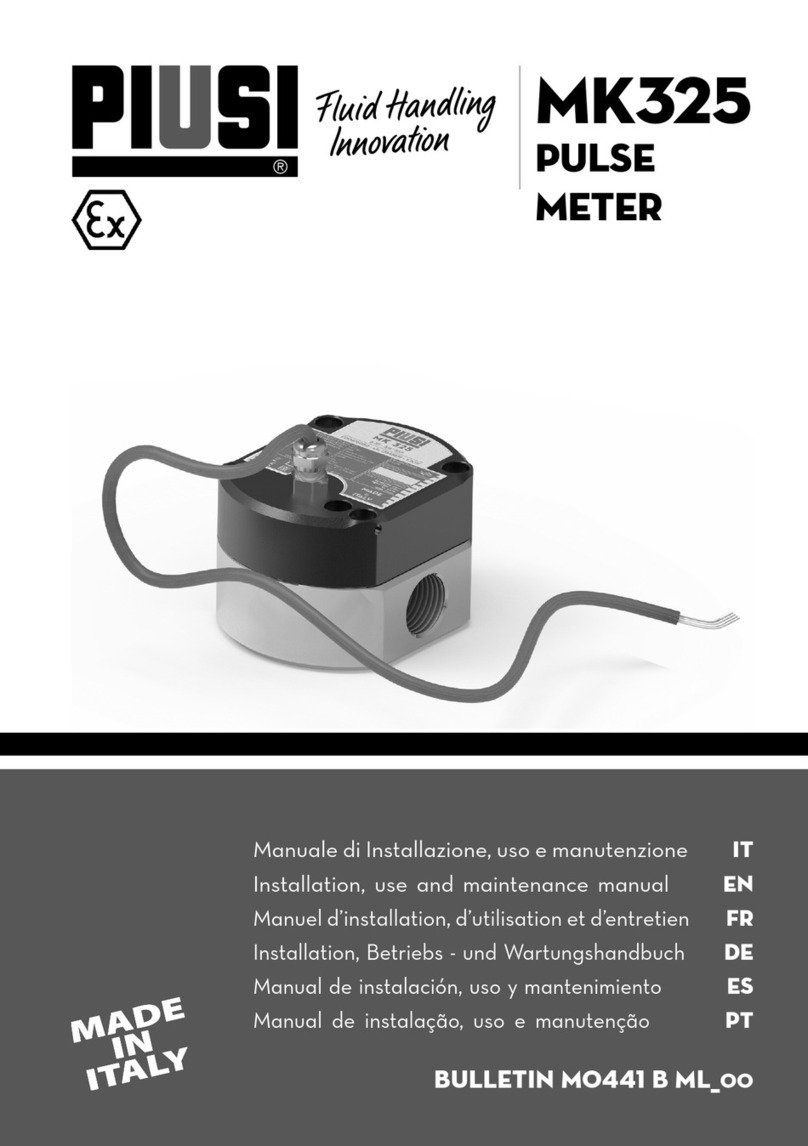
Piusi
Piusi MK325 Instructions for installation, use and maintenance manual

Sound Devices
Sound Devices Kashmir MixPre II Series user guide
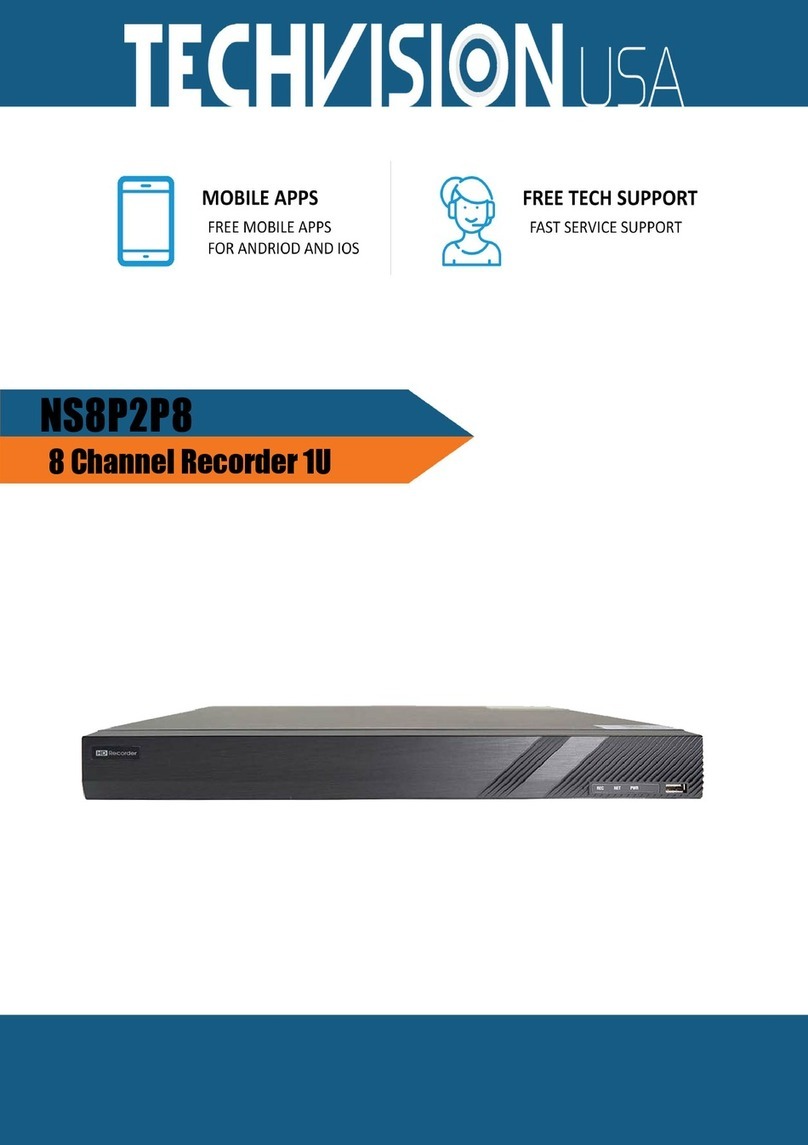
TechVision
TechVision NS8P2P8 manual
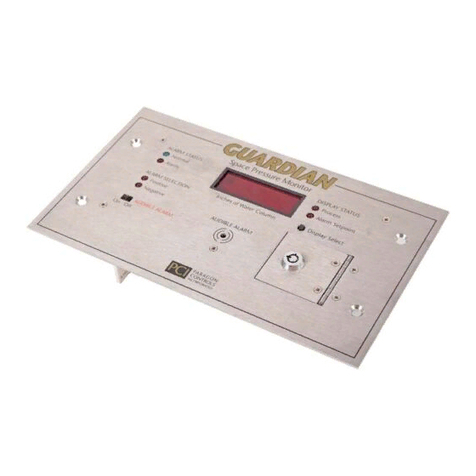
Paragon
Paragon GUARDIAN Operation & maintenance manual

Anritsu
Anritsu Site Master S810D Maintenance manual
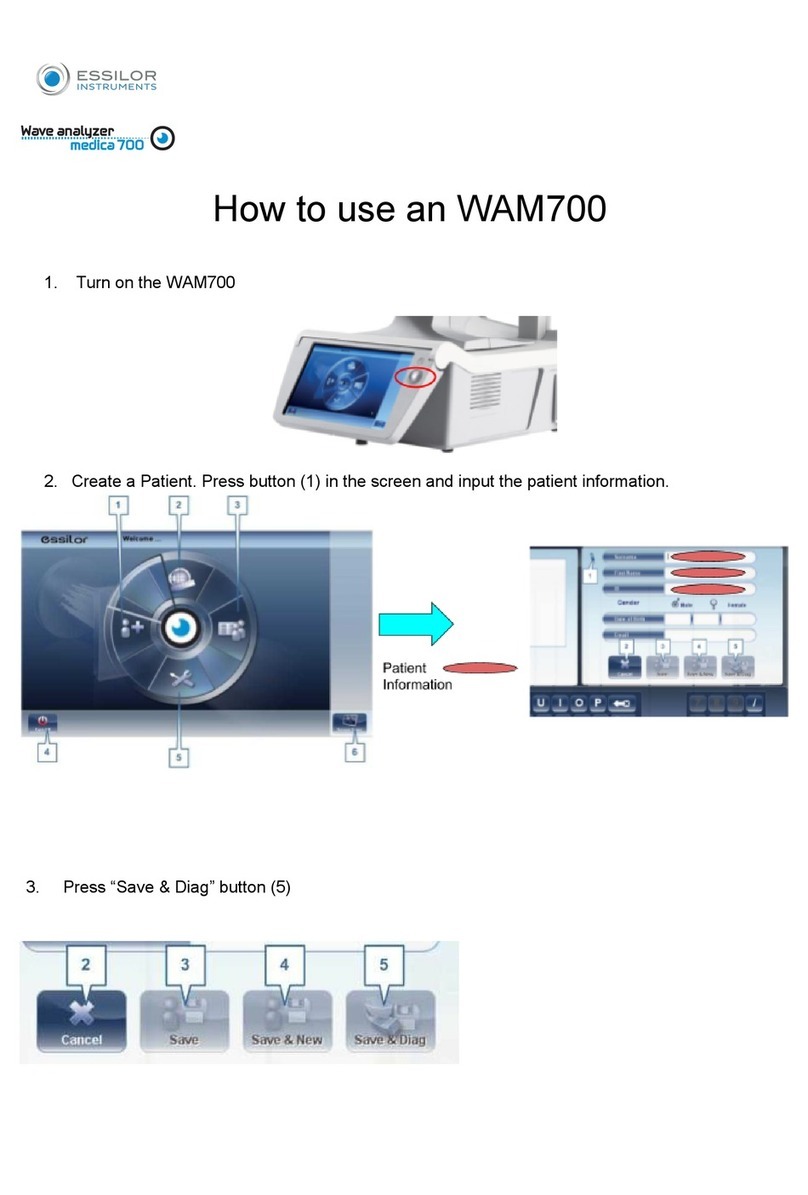
Essilor
Essilor WAM700 How to use
